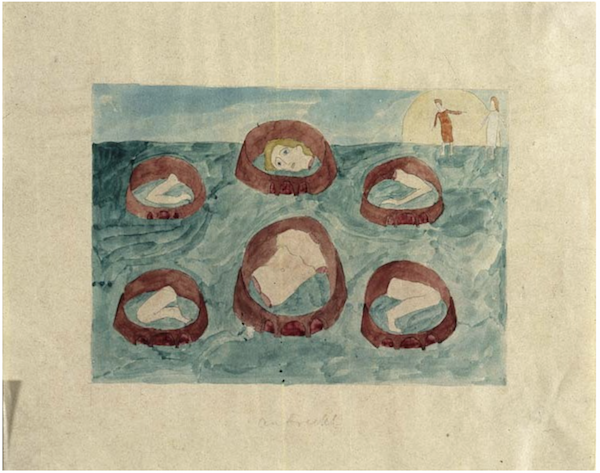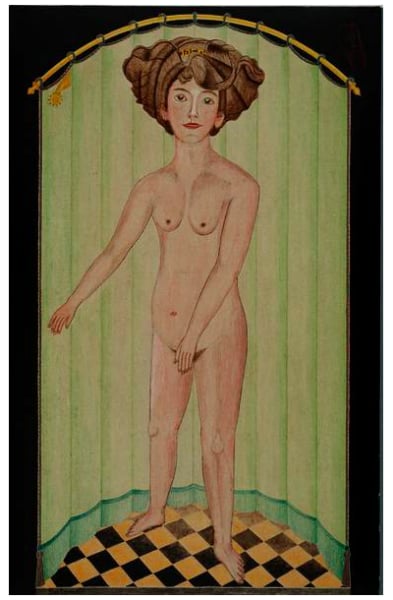Art & Exhibitions
The Prinzhorn Collection in Heidelberg Shines a Light on the Art of Mental Patients
Paul Klee and Max Ernst were influenced by the collection.

Paul Klee and Max Ernst were influenced by the collection.

Henri Neuendorf

An exhibition featuring works from the Prinzhorn Collection—which consists only of artworks created by the mentally ill—opens in the German town of Heidelberg tomorrow.
The show, titled “Das Wunder in der Schuheinlegesohle” (The Miracle in the Shoe Insole), includes 120 drawings, watercolors, and sculptures collected from patients in psychiatric institutions.
Thomas Röske, art historian and director of the Prinzhorn Collection told Focus “The works show how the patients made art to try to get their life back on track.”
According to Main Post the Prinzhorn Collection was amassed by the German psychiatrist Karl Wilmanns and his assistant—doctor and art historian Hans Prinzhorn.
Between 1919 and 1921 Prinzhorn traveled to several psychiatric institutions across Germany to collect approximately 5,000 artworks made by patients. By 1930 the collection has grown to include some 6,000 works.
The collection was popularized by the Austrian writer and illustrator Alfred Kubin, after professor Wilmanns had invited him to view the collection. Deeply impressed by the “secret laws” of the works, Kubin wrote about the “wonders of the artist’s minds, whose creativity dawned from beyond the depths our understanding” in his 1922 essay, The Art of the Insane.

August Natterer, Satana,1911
Photo: Prinzhorn Sammlung
Artists at the time were fascinated by the originality and immediacy of the collection’s expressions. Paul Klee saw an “intermediary realm” in the works beyond “normal” perception. Max Ernst, who attended lectures on mental illness as a student and explored the limits of madness in his art, used the drawings as inspiration. Klee and Ernst extensively studied the illustrations of Kubin’s writing, as did the surrealists in Paris.
Some of the works from the collection were exhibited in the notorious Nazi “Degenerate Art” show to serve as a reference point for comparison with the impressionist and neo-expressionist works which were damned by the Nazis.
After 1945 the collection faded into obscurity until it was rediscovered in 1963 by the curator Harald Szeemann. Since 1980, the collection has expanded further to about 14,000 works.
For more visual work created in psychiatric hospitals see also UNESCO Protects Haunting Victorian Mental Illness Photographs from Lunatic Asylum.
“Das Wunder in der Schuheinlegesohle” (The Miracle in the Shoe Insole) is on view at the Prinzhorn Collection Museum in Heidelberg from April 30-August 16.